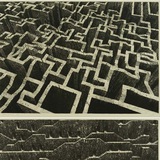https://www.tensorflow.org/hub/tutorials/tf2_object_detection
Object Detection with TF2 explained #tips
Object Detection with TF2 explained #tips
TensorFlow
TensorFlow Hub Object Detection Colab
https://github.com/qubvel/keras_telegram_callback
Telegram-bot callback for your Keras model
#keras #callback #tips #libs #code
Telegram-bot callback for your Keras model
#keras #callback #tips #libs #code
GitHub
GitHub - qubvel/keras_telegram_callback: Telegram-bot callback for your Keras model
Telegram-bot callback for your Keras model. Contribute to qubvel/keras_telegram_callback development by creating an account on GitHub.
#Tips Efficient Training Large Models on Multiple GPUs, Main Concepts (from https://huggingface.co/docs/transformers/perf_train_gpu_many):
DataParallel (DP) - the same setup is replicated multiple times, and each being fed a slice of the data. The processing is done in parallel and all setups are synchronized at the end of each training step.
TensorParallel (TP) - each tensor is split up into multiple chunks, so instead of having the whole tensor reside on a single gpu, each shard of the tensor resides on its designated gpu. During processing each shard gets processed separately and in parallel on different GPUs and the results are synced at the end of the step. This is what one may call horizontal parallelism, as the splitting happens on horizontal level.
PipelineParallel (PP) - the model is split up vertically (layer-level) across multiple GPUs, so that only one or several layers of the model are places on a single gpu. Each gpu processes in parallel different stages of the pipeline and working on a small chunk of the batch.
Zero Redundancy Optimizer (ZeRO) - Also performs sharding of the tensors somewhat similar to TP, except the whole tensor gets reconstructed in time for a forward or backward computation, therefore the model doesn’t need to be modified. It also supports various offloading techniques to compensate for limited GPU memory.
Sharded DDP - is another name for the foundational ZeRO concept as used by various other implementations of ZeRO.
#Frameworks :
https://www.deepspeed.ai/
https://fairscale.readthedocs.io/en/latest/
https://github.com/tunib-ai/oslo
https://github.com/microsoft/varuna
DataParallel (DP) - the same setup is replicated multiple times, and each being fed a slice of the data. The processing is done in parallel and all setups are synchronized at the end of each training step.
TensorParallel (TP) - each tensor is split up into multiple chunks, so instead of having the whole tensor reside on a single gpu, each shard of the tensor resides on its designated gpu. During processing each shard gets processed separately and in parallel on different GPUs and the results are synced at the end of the step. This is what one may call horizontal parallelism, as the splitting happens on horizontal level.
PipelineParallel (PP) - the model is split up vertically (layer-level) across multiple GPUs, so that only one or several layers of the model are places on a single gpu. Each gpu processes in parallel different stages of the pipeline and working on a small chunk of the batch.
Zero Redundancy Optimizer (ZeRO) - Also performs sharding of the tensors somewhat similar to TP, except the whole tensor gets reconstructed in time for a forward or backward computation, therefore the model doesn’t need to be modified. It also supports various offloading techniques to compensate for limited GPU memory.
Sharded DDP - is another name for the foundational ZeRO concept as used by various other implementations of ZeRO.
#Frameworks :
https://www.deepspeed.ai/
https://fairscale.readthedocs.io/en/latest/
https://github.com/tunib-ai/oslo
https://github.com/microsoft/varuna
huggingface.co
Parallelism methods
We’re on a journey to advance and democratize artificial intelligence through open source and open science.
Medium
Goodbye databases, it’s time to embrace Vector Databases!
The AI revolution is reshaping industries, promising remarkable innovations while introducing new challenges. In this transformative…
https://codemaker2016.medium.com/goodbye-databases-its-time-to-embrace-vector-databases-0ffa7879980e
#Tips
#Tips
🔥1
https://encord.com/blog/dimentionality-reduction-techniques-machine-learning/
Dimensionality reduction techniques in one place #FYI #Tips
Dimensionality reduction techniques in one place #FYI #Tips
Encord
Top 12 Dimensionality Reduction Techniques for Machine Learning
Dimensionality reduction is a fundamental technique in machine learning (ML) that simplifies datasets by reducing the number of input variables
🔥1
Dino/Dino v2 explained: Self-distillation with no labels & etc. #FYI #Tips #Explained #Tutorial
1. https://medium.com/@anuj.dutt9/emerging-properties-in-self-supervised-vision-transformers-dino-paper-summary-4c7a6ed68161 Original Dino
2. https://encord.com/blog/dinov2-self-supervised-learning-explained/
3. https://www.picsellia.com/post/dinov2-steps-by-steps-explanations-picsellia
4. https://www.ai-bites.net/dino-v2-learning-robust-visual-features-without-supervision-model-explained/
5. https://blog.marvik.ai/2023/05/16/dinov2-exploring-self-supervised-vision-transformers/
Original papers:
1. https://arxiv.org/abs/2104.14294 Emerging Properties in Self-Supervised Vision Transformers (Dino)
2. https://arxiv.org/abs/2304.07193 DINOv2: Learning Robust Visual Features without Supervision
3. https://arxiv.org/abs/2309.16588 Vision Transformers Need Registers
1. https://medium.com/@anuj.dutt9/emerging-properties-in-self-supervised-vision-transformers-dino-paper-summary-4c7a6ed68161 Original Dino
2. https://encord.com/blog/dinov2-self-supervised-learning-explained/
3. https://www.picsellia.com/post/dinov2-steps-by-steps-explanations-picsellia
4. https://www.ai-bites.net/dino-v2-learning-robust-visual-features-without-supervision-model-explained/
5. https://blog.marvik.ai/2023/05/16/dinov2-exploring-self-supervised-vision-transformers/
Original papers:
1. https://arxiv.org/abs/2104.14294 Emerging Properties in Self-Supervised Vision Transformers (Dino)
2. https://arxiv.org/abs/2304.07193 DINOv2: Learning Robust Visual Features without Supervision
3. https://arxiv.org/abs/2309.16588 Vision Transformers Need Registers
Medium
Emerging Properties in Self-Supervised Vision Transformers (DINO) — Paper Summary
Hi Everyone! Today, we’ll unravel the complexities of an intriguing approach in the realm of self-supervised learning, delving into a groundbreaking paper titled “Emerging Properties in…
